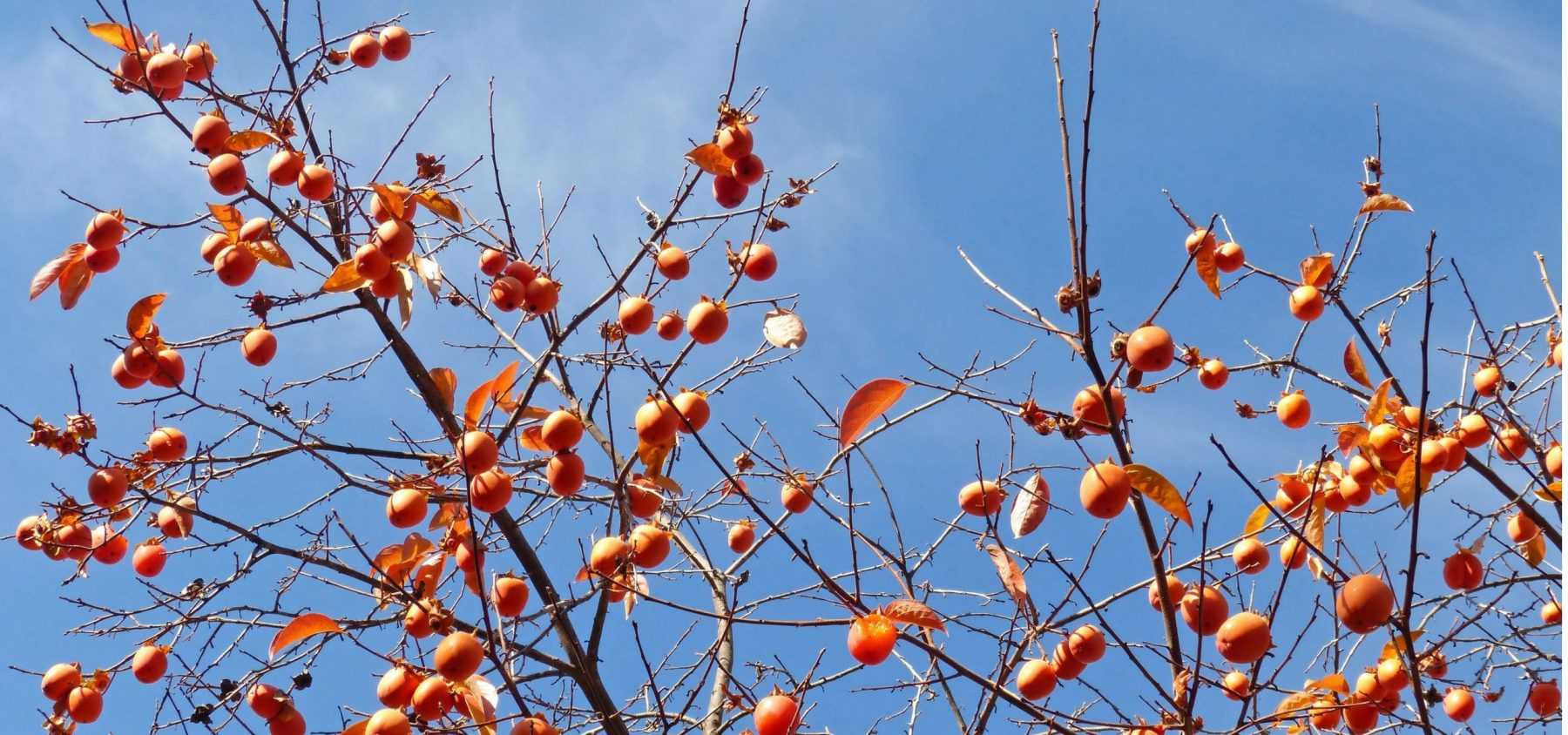
Persimmon or Kaki Tree: Planting, Pruning and Care
An ornamental fruit tree with juicy fruits
Contents
The Persimmon or Kaki Tree (Diospyros kaki) is an original, hardy and highly ornamental fruit tree, prized for its orange, very sweet fruits that remain attached to the tree until early winter. The persimmon is also highly decorative thanks to its foliage which takes on beautiful autumnal hues! Thriving in sun and warmth, it is particularly suited to the Mediterranean climate, but has the advantage of being very hardy (down to -15 to -18°C), making it possible to grow it in colder regions. Discover all our tips for successful cultivation in the garden, including how to plant and care for it.
→ Also listen to our podcast on persimmons: cultivation, harvest and gourmet ideas:
Where to plant the Persimmon tree?
In the garden, the Persimmon or Kaki tree can be planted in various locations: in the orchard, as a standalone specimen on a short grass meadow, or at the back of a flower bed.
The persimmon is a fruit tree that thrives in mild and sunny climates. When planting, choose a very sunny spot, as it requires plenty of light to produce its sweet fruits. Ideally, position it in a sheltered area away from wind, as its branches can be fragile, especially during fruiting. The Chinese Persimmon adapts well to all soil types, preferably slightly acidic. The soil must be well-drained, as the kaki dislikes excess moisture. A deep, organically rich soil will also promote healthy growth. It can tolerate slightly acidic or neutral soils but prefers light, sandy conditions.
The Persimmon is a hardy tree, capable of withstanding temperatures as low as -18°C, though it still requires significant summer heat to thrive. It is therefore suited to the same growing zones as fig, olive, or almond trees. If you live in a frost-prone region, protect the tree during winter, especially in its early years. Under these conditions, your persimmon tree will flourish and reward you with abundant harvests in autumn.
When to plant the young plant?
The ideal time to plant is in autumn, between September and October, when the soil is still warm, promoting good root development before winter. If you haven’t managed to do so, winter planting is possible, provided you avoid frost periods. Planting in spring is also feasible, but requires regular watering to compensate for heat and evaporation.
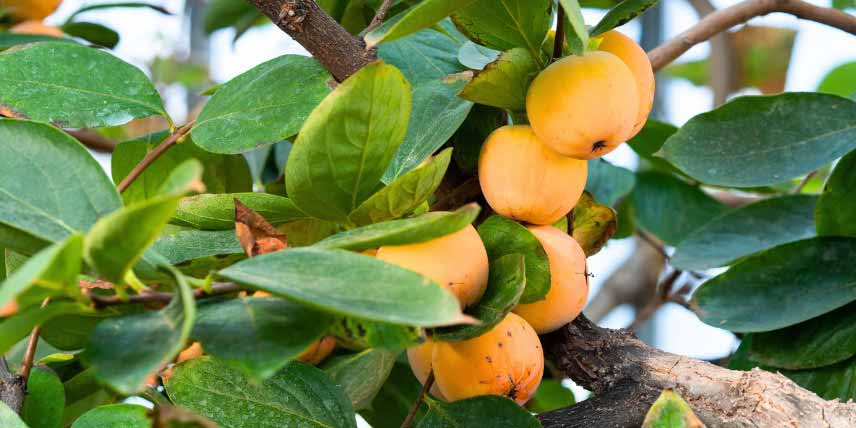
Discover other Persimmon trees - Diospyros
View all →Available in 2 sizes
Available in 2 sizes
Available in 1 sizes
Available in 1 sizes
Available in 2 sizes
Available in 1 sizes
Available in 2 sizes
Available in 1 sizes
Available in 1 sizes
Available in 1 sizes
How to Plant a Persimmon Tree?
If planting several trees, space them 5 to 7 metres apart in all directions.
To plant:
- Soak the root ball in water for a few moments before planting.
- Dig a hole 3 to 4 times larger than the volume of the root ball, ensuring to keep the subsoil on one side and the topsoil on the other.
- Mix the subsoil with ground horn and well-rotted compost or potting soil, then pour this mixture into the bottom of the planting hole.
- Install a stake.
- Position the root ball without burying the collar, cover with topsoil and firm down well.
- Create a shallow basin around the base and water generously.
- Secure the stake to the young plant, crossing the tie in a figure-eight shape, without touching the trunk.
Watering should be regular during the first year, then as needed, mainly during periods of intense heat.
Read also
How to plant a fruit tree?How to care for it?
Maintaining a persimmon tree is relatively simple, but some regular care will help it thrive and produce beautiful fruit.
During the first few years, water regularly, especially during dry spells. Once well-rooted, it becomes more drought-resistant, but moderate watering in summer helps produce larger, juicier fruit. Ensure the soil remains well-drained.
Prune the persimmon in late winter or early spring, before new growth begins. Pruning is straightforward and involves removing dead or crossing branches to allow air and light to circulate through the canopy. Stake branches if they bear too much fruit. Fruiting occurs on the current year’s wood. Avoid excessive pruning, as this may reduce fruit production.
Every year in early spring, apply well-rotted compost by lightly working it into the surface, taking care not to damage the roots.
Since persimmons are rarely affected by diseases or pests, no treatment is necessary.
In winter, in colder regions, protect young trees from frost with mulch at the base and, if needed, a protective cover.
- Subscribe!
- Contents


































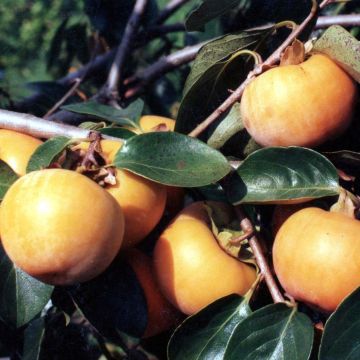


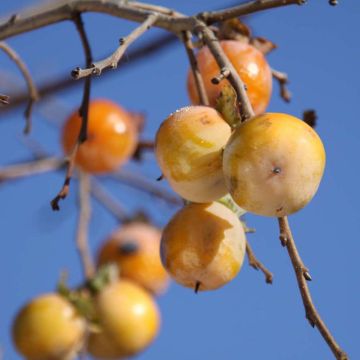
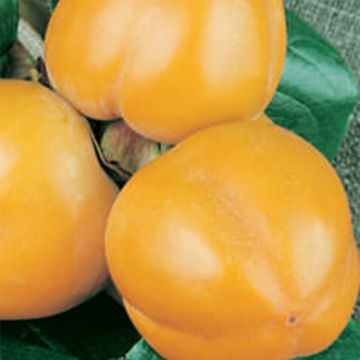
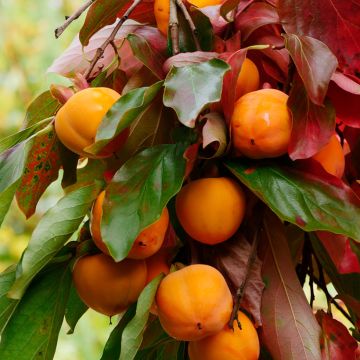
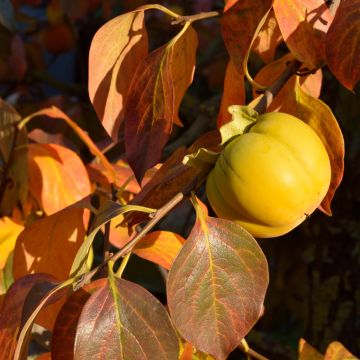
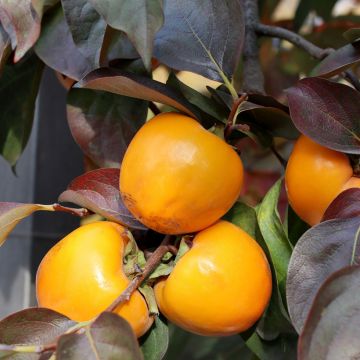
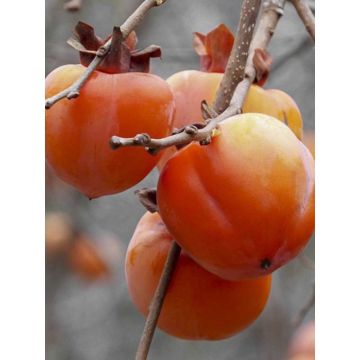
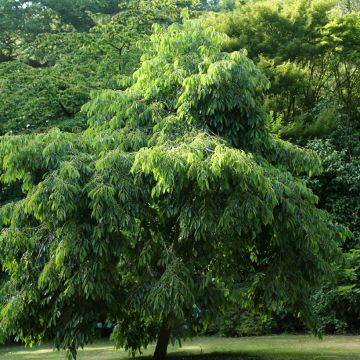
Comments